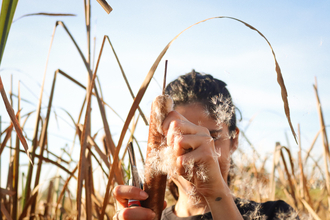Across the UK, large areas of lowland peatlands have been drained and converted to farmland. In fact, in Lancashire, Manchester & North Merseyside alone, 98 per cent of our lowland peatlands have been lost to drainage, releasing untold amounts of carbon into the atmosphere.
However, re-wetting these areas and growing crops which can tolerate higher water levels could significantly reduce this carbon release, helping to fight the climate emergency. The Wildlife Trust for Lancashire, Manchester & North Merseyside are trialling this form of wetter farming, also known as paludiculture, on a field in Greater Manchester, growing a celery crop. The pilot project is the first time that anyone in the UK has trialled farming traditional food crops on land with a higher water table.



